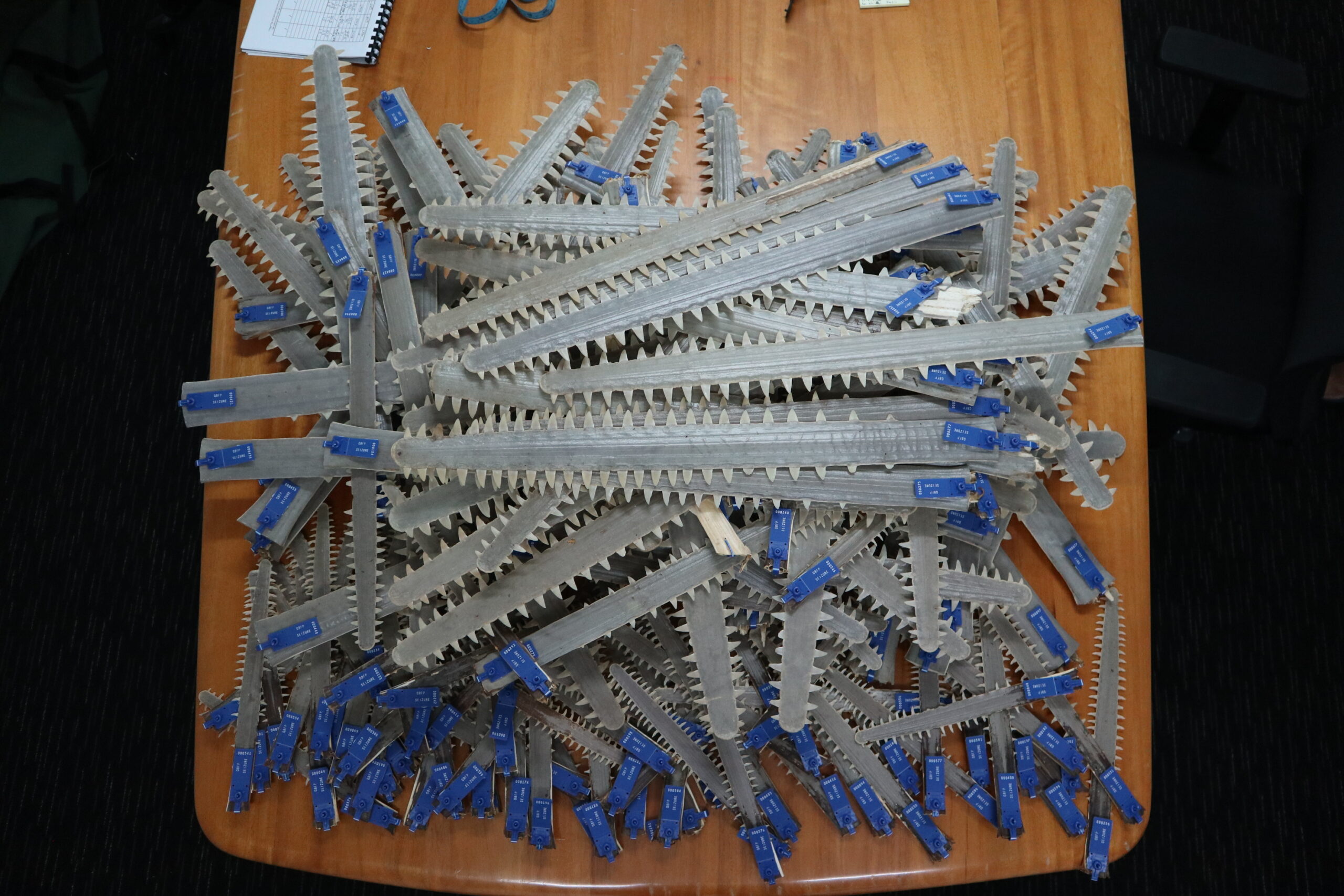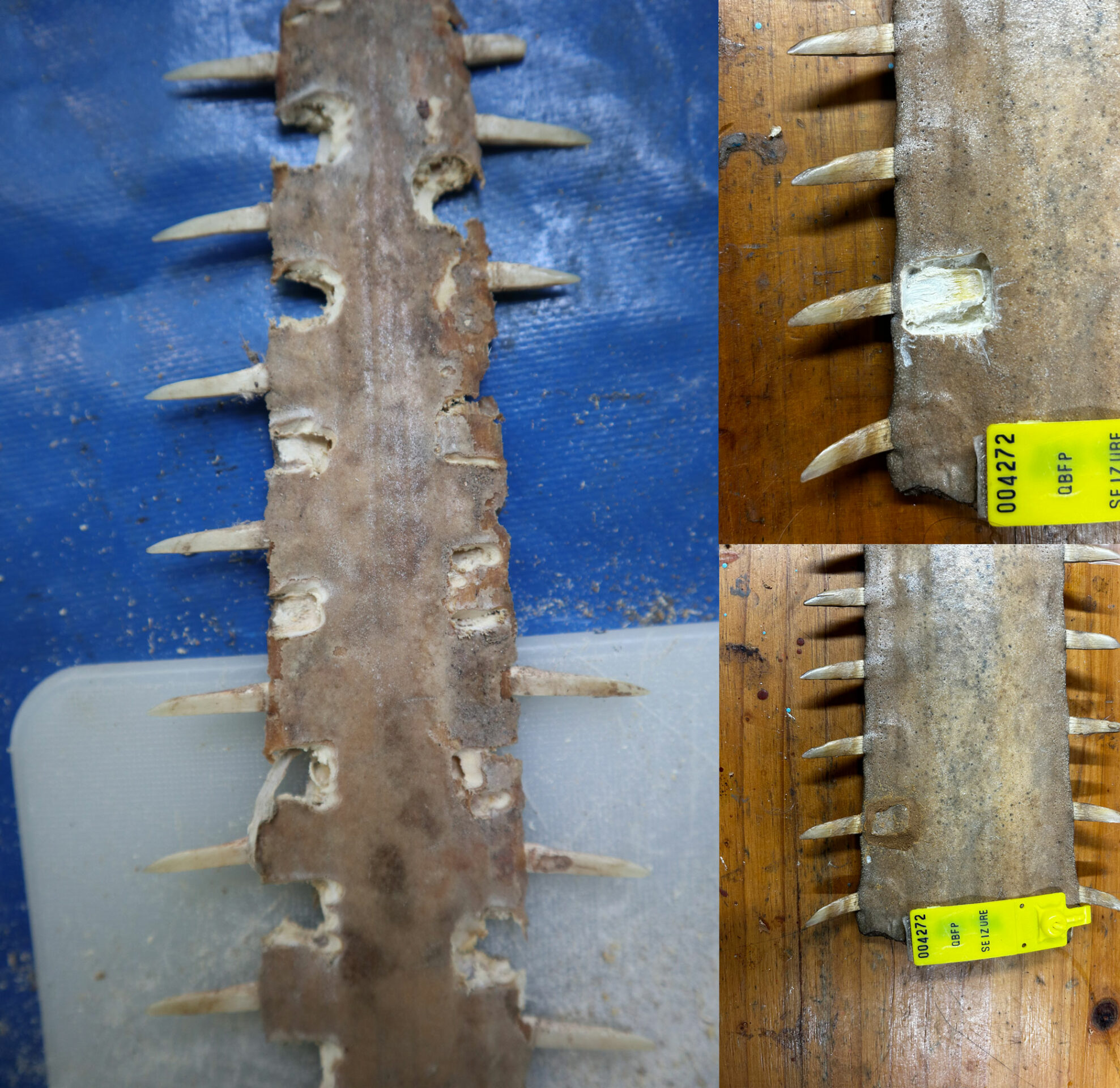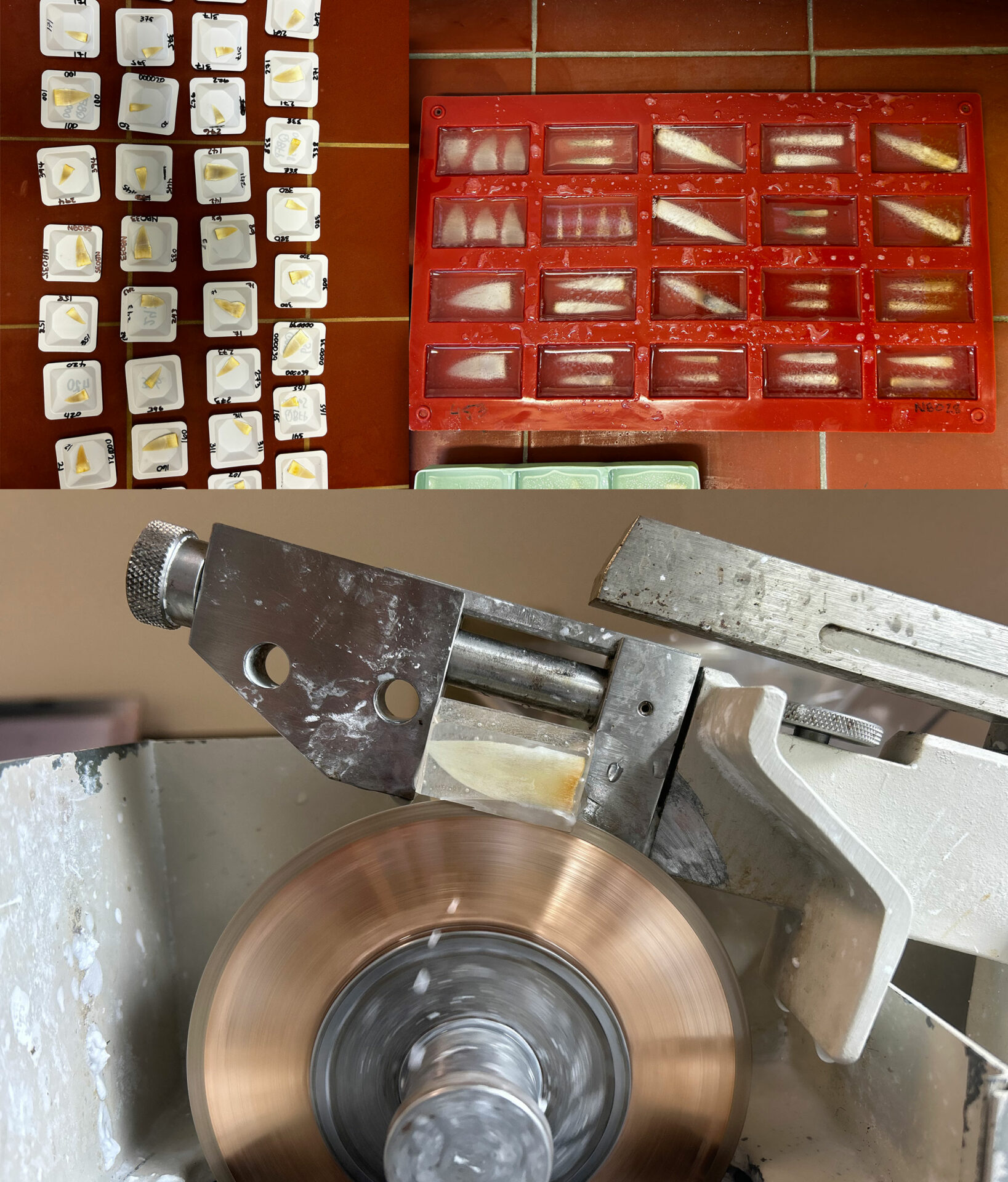Unveiling the Secrets of Sawfish: A Journey through Chemical Fingerprints and Conservation
Sawfishes are iconic species that embody many of the challenges faced in marine conservation. Despite comprehensive protection measures across various levels in Australia, their populations remain under threat from bycatch and illegal fishing for their fins and rostra. Unfortunately, the confiscated or forfeited trophy rostra available for research often come with little to no associated location data. This severely limits their potential for distribution analyses, which are critical for effective conservation strategies.

All these rostra have a story, now it’s our goal to tell it. Photo © Nikki Biskis
The Research Journey
As a PhD student at the University of the Sunshine Coast (UniSC) and the non-profit organization Sharks And Rays Australia (SARA), one of my research aims is to address this challenge. This project evaluates the use of trace elemental analysis to identify capture locations and origin estuaries for narrow (Anoxypristis cuspidata), green (Pristis zijsron), and freshwater (Pristis pristis) sawfishes along the Queensland coast.
Methodology
All the rostra used in this research were received through a collaboration by SARA and the Queensland Department of Agriculture and Fisheries (QDAF). At SARA, over the last two years, I’ve taken teeth from over 200 of these.

(Left) My first attempts at taking teeth were a bit gruesome and may or may not have given Barbara a heart attack. (Right) We’ve now refined our methods so that sampling scars on saws used for education or that belong to other institutions are more subtle. Photo © Nikki Biskis

Our health and safety officer during tooth removal. Photo © Nikki Biskis
Trace elements such as strontium, barium, etc. vary in the environment due to salinity, temperature, upwelling, runoff – all these factors give an estuary a unique chemical fingerprint. So, by measuring the quantities of these through just a tiny spot at the base of each tooth, we can use the chemical signatures to assign them to an origin estuary. This is a common technique amongst bony fish but is relatively new amongst sharks and rays.
If we take a transect, or line along the length of the tooth, we can see fluctuations due to these changes in the environment, allowing us a look into how the animals are moving, how they use their habitat. This is especially meaningful, as sawfishes are now rare, so while it might sound strange, a tooth might provide some of the most in depth insights into the spatial use patterns of these species.

The teeth were then cleaned, epoxied, sectioned, and polished at UniSC. Photo © Nikki Biskis
What’s more, a subset of the samples was taken from an entire animal, meaning we have the vertebrae – the stock standard for aging sharks and rays – as well. This means I have the very exciting side quest of investigating teeth as potential aging structure, through comparison of visual banding and elemental signature across the two sources.
In other words, the teeth may hold the key to using these trophy rostra for conservation, protecting future populations.
